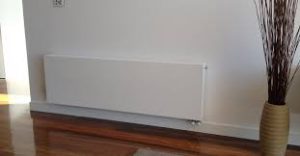
Cost estimate versus design features
After months of discussions and design work, we arrived at a delicate point in our project. Hopes and dreams collided with the cost estimate. What does it cost to have all the sustainable features we wanted in the design? How did the predicted cost compare to our initial budget?
Reviewing the cost estimate.

There was some sticker shock when David completed the cost estimate for the detailed design.
Upon reflection, it should not have surprised us that the amount was higher than the early “back of the envelope” calculations. We wanted a design that used the latest sustainable features and produced an attractive, comfortable home. Our design choices were focused on meeting those objectives, not sticking to a fixed budget.
Now, as they say, knowledge is power. We had the data so everyone in the team slipped on their thinking caps. What were the sensible opportunities to reduce the cost estimate?
Sticking with the design philosophy.
Trimming the cost estimate did not involve wholesale removal of sustainability features. Nobody wanted to eliminate items that were essential to achieving our dream of a green home. The energy and enthusiasm would quickly evaporate if we simply deleted ideas just to meet a dollar figure. Why go to all this effort and then revert to a standard home?
So, out came the sharp pencil. How could we retain the design integrity but cut the cost estimate? Here are some examples of the changes we made.
Reduce amount of Timbercrete.

Timbercrete blocks are a significant contributor to the wall construction cost. David wondered if this fine building material had to be used in all the walls. Could we replace a wall or two with cladding and a thick layer of insulation? The walls on the bedrooms in the south-eastern corner looked like the best bet.
Another run of the NatHERS program with the changed walls only caused a minor reduction in the Star rating for the design. As well as the material cost saving, labour costs dropped due to the simpler construction method.
Since the thermal performance of the house wasn’t greatly affected, we chose the modified design.
Double glazed window costs reviewed.
Double glazed windows contribute to the thermal efficiency of a house design. We never considered going back to single glazed windows. Instead, we shopped around for quotes from a range of potential suppliers to compare price, performance and appearance.
After much debate, we settled on Aspect as our supplier. Their window specifications met the performance requirements used in the NatHERS calculations. With the natural look of the oiled timber frames, the windows are an attractive feature. A competitive quote ensured the cost fitted into the budget.
Another local manufacturer, Miglas, was our second choice. They offered a combination wood and aluminium frame. The aluminium on the external side helps to reduce maintenance while the wood on the inside of the frame fits well with the natural look we want. Unfortunately, we couldn’t stretch the budget far enough.
Heating method reconsidered.
We often discussed what would be an appropriate heating method for the coldest winter days. Before we knew the exact cost, our preference was for hydronic heating using wall radiators. Rooms are gently heated by the panels if the temperature in the house drops too low. A split system air conditioner was the alternative, based on its ability to efficiently use energy to both heat and cool the house. However, blowing warm air around might not be as comfortable as hydronic heating.

We started by specifying a hydronic heating system and quickly found we’d backed ourselves into a corner. This is an all-electric home. We had eliminated the possibility of using a gas-fired furnace to heat the water in the hydronic system. The efficient alternative to a gas-fired heater is an electric heat pump. As explained by an article in the ATA All Electric Home eBook, powering a hydronic system with a heat pump is one of the more expensive options.
Our supplier then found it difficult to find a heat pump unit that serviced both the hydronic unit and the hot water system. It’s possible but choice is limited and the units come with extra costs such as specially designed hot water storage tanks.
Swap to an alternative heating method.
Time to back out of the corner and get back to basic, proven technologies.
We felt that separating the hot water system from the heating system would simplify the design and reduce the cost. A standard heat pump and storage tank arrangement now supplies hot water and a reverse cycle air conditioner provides heat during particularly cold days. An upside to our change of heart is the air conditioner cools the living area if the house gets too warm after a run of hot summer days.

Some things weren’t changed.
There were some design choices that we didn’t alter. Any change would detract from the particular look and feel we wanted in the finished home. Not everything is about the cost estimate. If we trimmed the lot to fit into a preconceived price, the compromises would affect how well the house worked and annoy us forever.
Sticking with the wooden floors in the bedrooms is a good example. Yes, wall to wall carpet would be a relatively inexpensive covering for the concrete floor but it would make the rooms look ordinary. The original plan of laying recycled 1920’s tram depot floorboards gives the rooms character so no change to our plan.
Other sustainable builders have similar stories.
We are not alone in experiencing some sticker shock with a cost estimate.
The owners of Greeny Flat designed and built a 57 square metre cottage using a similar sustainability philosophy. Their objective was to complete the build for $1750 per square metre. This figure did not include a profit margin as they were owner-builders. The actual cost was higher at $2250 per square metre which they predicted would go to $2650 by including a builder’s profit margin.
Why was the actual cost higher? Greeny Flat concluded it was due to their investment in many sustainability features such as double glazing, solar power and extra insulation.
Another article in the ATA All Electric Home eBook showed it is possible to minimise the gap between the cost of a “standard” house and one that includes a broad range of sustainability features.
The 108 square metre net-zero carbon cottage cost the owner-builder just $1480 per square metre to construct. Paying ruthless attention to detail in every part of the design process kept costs down. One example was considering many different wall construction techniques. A cost/benefit analysis showed that HardiePlank boards came out on top due to low cost, fast installation and durability.
Why accept a (possibly) higher cost estimate?
Sustainable homes may start with a higher build price, but they earn their keep in the decades of operation afterwards. The costs of operating and maintaining a green home are significantly lower than a traditional home.

Think of the Energy Rating Labels (ERL) stuck onto electrical appliances. The ERL website helps buyers compare the operating costs of appliances with different star ratings (ie different efficiencies). It’s likely a more expensive, but more efficient appliance, can be justified based on the dollars saved over many years of operation.
Wouldn’t it be informative if houses came with a similar sticker?

Greeny Flat reports an annual energy bill of $311. Most of the electricity used to power the house comes from a 3kW solar power system. Efficient appliances, such as a refrigerator fitted with an inverter, minimise the energy demand. Passive design reduces the need for heating and cooling devices to maintain a comfortable temperature inside. External temperatures at the Greeny Flat ranged from -4 to 41 degrees. Despite not having a heating or cooling system, the interior stayed between 13 and 27 degrees (ie woolly jumper to T-shirt temperatures).
Greeny Flat maintenance costs are also minimal. They selected the construction materials and finishings based on durability. Cost of town water was reduced by installing rainwater harvesting and planting a low water use garden.
What happens next?
A reasonable budget for the build is now in place.
We believe the budget strikes the right balance between essential sustainability features and cost while not sacrificing kerb appeal.
The experience shared by other green builders gives us confidence in our design. We expect to achieve similar results to theirs – a comfortable home that doesn’t cost a fortune every year to maintain that comfort.







3 Comments
Caroline
December 09, 12 2017 06:26:50Very pragmatic! I’m sure there are more hard decisions ahead – but also sure you won’t compromise on the really important stuff.
This post reminds me of a (possibly apocryphal) story I heard today. Apparently the British author Monica Dickens (great-granddaughter of Charles) was on an author tour in Aus. After her talk, the audience approached her with books to sign. A woman thrust a copy of her latest novel at Monica, who asked the woman’s name name. She was then starting to inscribe it to ‘Emma Chizzit’ when the woman woman cried: “Wait! Owmuch Duzzit Cost?”
Anne Thompson
December 09, 12 2017 10:07:32Great message to read! The hard reality does not mean having to forego your ideals. Well done on the review and decisions made. Good luck moving forward.
Gillian Cohen
December 10, 12 2017 09:32:29What challenges! Not unexpected, I guess. The compromises seem very reasonable.